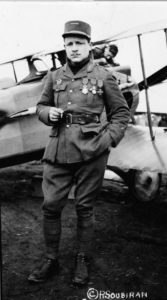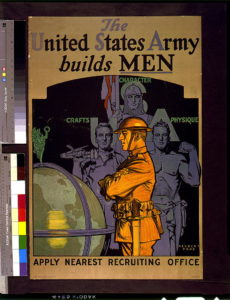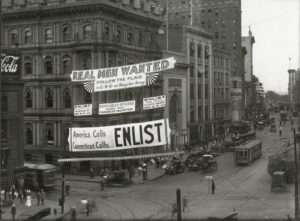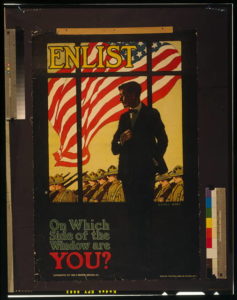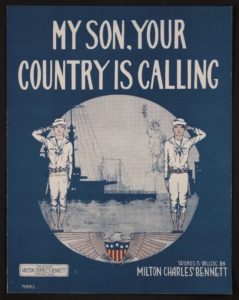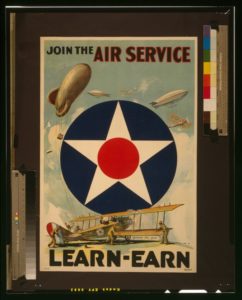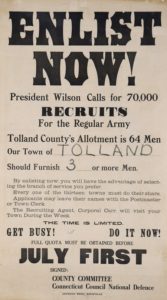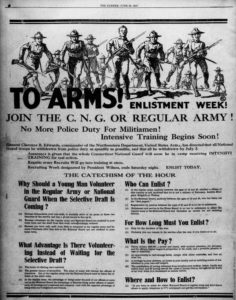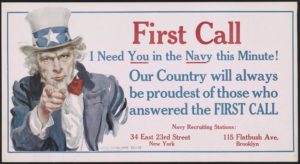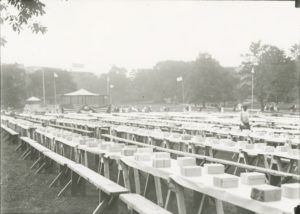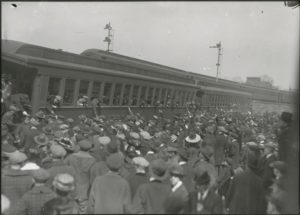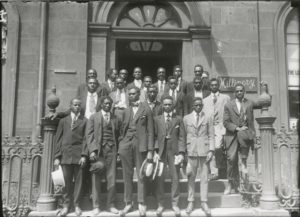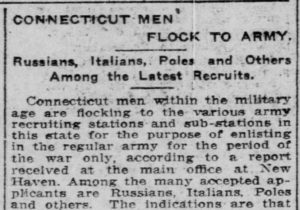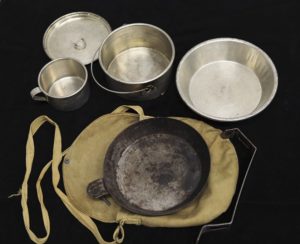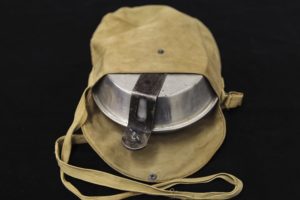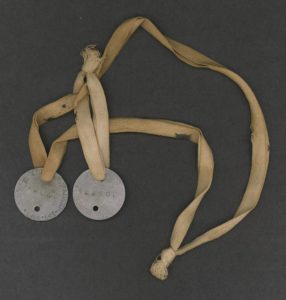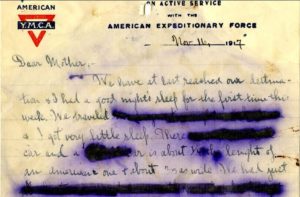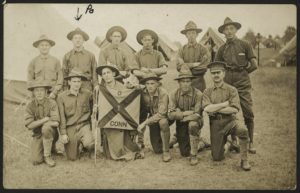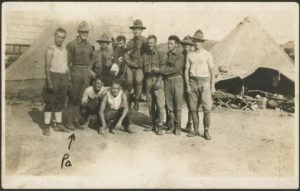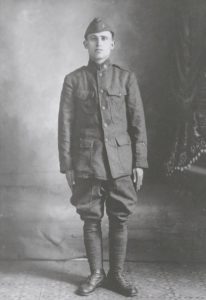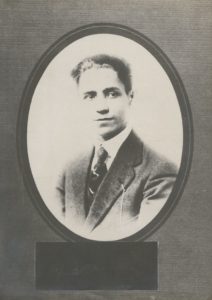World War I (1917-1918)
When the United States entered Europe’s Great War in 1917, Connecticut manufacturers provided the military with munitions, clothing, and other goods. From Manchester silk and Waterbury brass to Bridgeport’s Remington Arms, which produced 50 percent of the US Army’s small arms cartridges, the industrial ramp up—and curtailed immigration from Europe—produced labor shortages. African Americans migrating from the South sought to fill these jobs. Many found opportunity and settled, but they also encountered racial discrimination from whites and class prejudice within established black communities. In addition to the men and women who worked on the home front, roughly 63,000 state residents served in the US or Allied forces. Among those remembered today are flying ace Raoul Lufbery and Stubby, the canine mascot of the 102nd Infantry, 26th Yankee Division.
The War Front:
- Photograph: Lafayette Escadrille, Lt. Raoul Lufbury, ca. 1920 – Library of Congress, Prints and Photographs Division
- Poster: Recruitment poster – “The United States Army builds Men. Apply Nearest Recruiting Office,” ca. 1919 – Library of Congress, Prints and Photographs Division
- Photograph: An enlistment banner hangs across Hartford’s Main Street, just before Pearl Street, urging men to enlist in the Connecticut National Guard or the regular army – Connecticut State Library, Dudley Photograph Collection
- Poster: “Enlist On which side of the window are you?,” 1917 – Library of Congress, Prints and Photographs Division
- Document: Sheet music “My Son, Your Country is Calling,” by Milton Charles Bennett, Hartford, CT, 1917 – Library of Congress, Music Division, World War I Sheet Music Collection
- Poster: “Join the Air Service-Learn-Earn,” enlistment poster, 1917 – Library of Congress, Prints and Photographs Division
- Poster: “Enlist now!” which calls for the enlistment of 64 men from Tolland County, Connecticut – Connecticut Historical Society
- Document: “To Arms!” a full page ad in The Bridgeport Evening Farmer, Bridgeport, CT, June 29, 1917 – Library of Congress, Chronicling America: Historic American Newspapers
- Poster: “First Call: I Need You in the Navy this Minute! Our Country will always be proudest of those who answered the FIRST CALL,” by James Montgomery Flagg, ca. 1917 – Library of Congress, Prints and Photographs Division
- Photograph: Eighty-one tables are set with 1,100 boxed lunches in Bushnell Park, Hartford, Connecticut. The luncheon was part of the farewell planned for Hartford’s first draft contingent, September, 4, 1917 – Connecticut State Library, Dudley Photograph Collection of Hartford during World War I, 1917-1919 (PG 034)
- Photograph: March 30, 1918, People crowd the siding at Union Station, Hartford, to say farewell to draftees – Connecticut State Library, Dudley Photograph Collection of Hartford during World War I, 1917-1919 (PG 034)
- Photograph: African American draftees on the steps of the Halls of Record before entraining for Camp Devens in Massachusetts – Connecticut State Library, Dudley Photograph Collection of Hartford during World War I, 1917-1919 (PG 034)
- Document: Detail from newspaper article “Connecticut Men Flock to Army.” Norwich Bulletin, Norwich, CT, June 5, 1917. Click here for the entire article Library of Congress, Chronicling America: Historic American Newspapers
- Object: An unassembled World War I mess kit and sack belonging to Percy Winslow Eustis, ca. 1917 – 1919 – Connecticut State Library, State Archives
- Object: A World War One mess kit and sack belonging to Percy Winslow Eustis, ca. 1917-1919 – Connecticut State Library, State Archives
- Object: Luther Parker’s United States Army, American Expeditionary Forces dog tags, ca. 1917-1919 – Connecticut State Library, State Archives
- Detail from the letter from Charles F. Coughlin to his mother, November 16, 1917. Click here to read the entire four pages – Connecticut Historical Society, Matthew E. and Charles F. Coughlin World War I correspondence and memorabilia, 1879-1921, 66232
- Photograph: Men of Company G, 1st Infantry, Connecticut National Guard pose for a photo with the Company G guidon, 1914 – Connecticut State Library, State Archives – Gworek, Jacob Joseph, 1884-1956 collection
- Photograph: Jacob Gworek in camp, 1914 – Connecticut State Library, State Archives – Gworek, Jacob Joseph, 1884-1956 collection
- Photograph: Portrait of Joseph (Guiseppe) Logiudice, 77th Infantry, World War I, ca. 1917-1919 – Connecticut State Library, State Archives – Logiudice, Joseph, 1896-1959, collection
- Photograph: Cristobal Rodriguez Hidalgo, United States Army, 38th Infantry Regiment, ca. 1917 – 1918 – Connecticut State Library, State Archives
This TeachITCT.org activity is sponsored in part by the Library of Congress Teaching with Primary Sources Eastern Region Program, coordinated by Waynesburg University.

